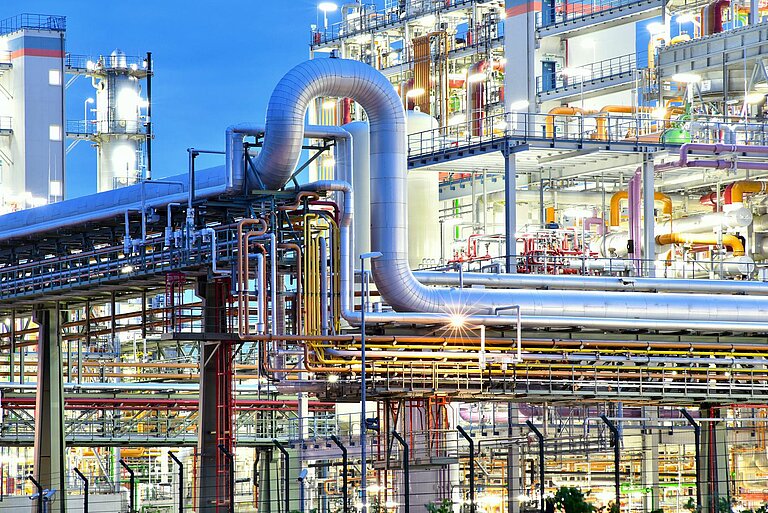EnEff: Wärme: NENIA – network-linked use of industrial waste heat

The use of waste heat from industrial processes is an important efficiency field. In addition to increased heat integration in businesses, external waste heat use also plays a role, particularly in energy-intensive applications in the manufacturing industry. This is particularly evident in view of the requirements for the near-term decarbonisation of the heating supply for buildings in order to achieve climate protection targets. The integration of industrial waste heat sources into existing or new heating networks is an important strategic factor in helping to reduce the still dominant share of fossil heat generation in the heating market.
Waste heat use as a field of action in energy policy
Waste heat use in heating grids has to date been addressed primarily through the market stimulation programme, the Combined Heat and Power Act (KWKG) and the KfW bank’s Energy Efficiency Programme. As part of the national action plan for energy efficiency and the “Waste Heat Offensive”, a process was initiated in 2015 for the revision and enhancement of the political funding and guidance instruments for increased waste heat use. In this context, special funding schemes for grid-based waste heat use were established: the KfW programmes 294/494 and the Heating Networks 4.0 programme.
In terms of improving integrated heat use beyond operating limits, there has been a lack of comprehensive systematic elicitation of usable waste heat potential from different industrial production processes. While some studies of available theoretical waste heat potentials have been conducted in the manufacturing industry, calculating the technically and economically feasible grid-based potential requires extremely detailed recording and comparison of waste heat supply and heat demand (heat sources / heat sink analysis) in relation to both space and time.
Development of a nationwide waste heat register and a heating demand map
As part of the joint project “EnEff:heat: NENIA”, a comprehensive geodata bank was drawn up, featuring more than 4,700 industrial sites with specific details of energy use and the resultant theoretically usable heat quantities of around 63 TWh/a – differentiated by temperature, humidity, pollutant load and temporal availability. The declarations of airborne emissions from manufacturing companies in accordance with the 11th Federal Immission Control Act (11. BImSchV), supplementary data from the E-PRTR database, and independent research into thermally relevant electricity inputs (e.g. Hall-Héroult electrolysis/aluminium smelting) were collated to create a data basis.
In addition, six case studies in industrial companies and a questionnaire-based survey of around 40 other companies generated extensive empirical input on data validation and the recording of technical, economic and organisational barriers with regard to external waste heat utilisation. These were incorporated into the derivation of political recommendations for action.
A nationwide GIS model known as Heat Map2.0 was developed for high-resolution spatial mapping of the development of the heating demand in residential and non-residential buildings, based on the simulation results from ifeu’s building model “GEMOD”. In conjunction with models for the spatial mapping of existing district heating supply areas and other feasible heat network potential areas, a comprehensive nationwide comparison of waste heat supply and heat sink potential was carried out for the first time to determine the technically and economically feasible potential of industrial waste heat in heating networks. A number of temperature requirements on the part of heating consumers and a corresponding passive or active use of the available waste heat sources were taken into account.
The results show that, in many companies, significant, externally available waste heat quantities are available and, to a large extent, can be exploited economically (80-90% in the low/medium temperature range). This can be attributed in part to the positive spatial correlation between waste heat supply and heat sink potential: Much of the available technical waste heat potential is located at a distance of less than 1,000 m from adequate heat sinks that can be supplied from the grid.
Runtime
August 2015 – July 2018
Funding
Federal Ministry for Economic Affairs and EnergyPartner
GEF Ingenieur AG
geomer GmbH
indevo GmbH
Info
Publications
Final report (in German, pdf 8 MB)
Presentation of the project on the website Energie-Wende-Bauen
